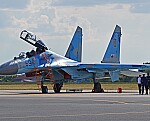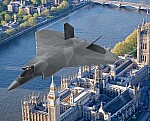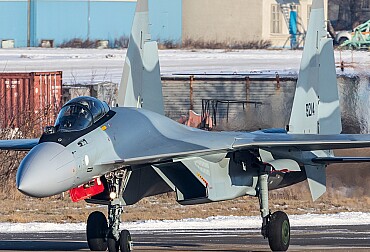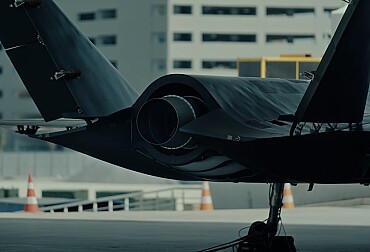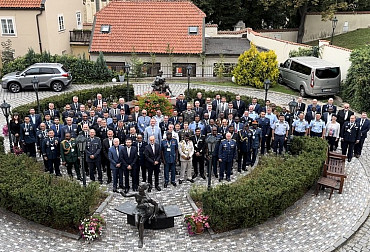"Killing with a joystick is bad" – Bundeswehr’s Heron TP UAVs are still unarmed
Israel's IAI Eitan 'Steadfast' unmanned reconnaissance aircraft, also known as the Heron TP, made headlines back in 2022 when the Bundestag's defence committee gave the green light for Germany to purchase 140 of these armed drones in a contract worth $165 million. Since than their use and specifically their armament has been subject to severe political fighting in Germany.
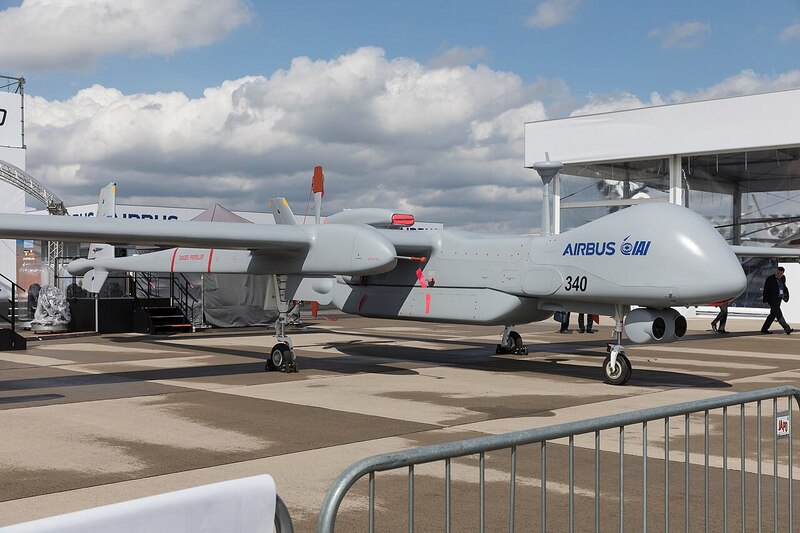
The state-of-the-art construction of the Heron TP reflected Germany's decision to turn to Israel for its first fleet of armed UAVs. This unmanned aerial vehicle (UAV) has a host of important capabilities, including enhanced intelligence gathering, surveillance, missile defence and in-flight refuelling. Comparable to Northrop Grumman's Global Hawk, the Heron TP brings high-altitude, long-endurance (HALE) capabilities to the Israel Defence Forces (IDF). This bigger and better armed drone has helped to elevate the Jewish state to the drone superpower it is today.
The Heron TP was developed by Israel Aerospace Industries' Malat division and entered service with the Israeli Air Force in 2010. Israel's 210 Squadron became the first unit to use the drone shortly afterwards. However, the armed drone dates back to 2004. At that time, the Israeli Air Force magazine publicised the existence of the drone programme and reported that two prototypes were already in the pipeline. The Eitan prototype was unveiled for the first time in 2007 at a media event at Tel Nof air base.
Featuring an ultra-modern design, the Heron TP is 13 metres long and has an all-composite airframe. The drone has a wingspan of 26 metres, giving it an extremely high aspect ratio. As a medium-range, long-endurance UAV, the Heron TP can operate at altitudes above commercial air traffic, in excess of 41,000 feet, and features de-icing systems, all-weather capabilities and automatic take-off and landing (ATOL) systems. What's more, it can fly for around 40 hours at a time and has a payload of 1,000 kilograms. The drone is powered by a 12,000 hp Pratt & Whitney PT6A-67A turboprop engine, enabling it to fly at a speed of around 200 knots. The triple redundancy of all the UAV's avionics systems makes it a powerful addition to the Israeli air force's arsenal.
Although the Heron TP was only incorporated into the Israeli Air Force in 2010, this armed UAV has already been used by the IDF in combat missions. The Heron TP was reportedly used during Operation Cast Lead in 2008, a three-week battle between Hamas militants and the IDF in Gaza. In 2014, the Heron TP's satellite data link and infrared electro-optical sensors helped the IDF in Operation Protective Edge in Gaza. The former commander of Israel's 210 'White Eagle' squadron Eitan explained the utility of the drone in combat: "We always say that we start the war two weeks before and end it two weeks later. We start gathering intelligence before the fighting breaks out, and then once the fighting is over, we gather intelligence to assess the damage inflicted on our enemy." The commander is referring to the real-time imagery and telemetry data that the Heron TP collects and then transmits to the ground control system. The Heron TP remains an essential part of the Israeli Air Force's growing fleet of UAVs. Its ability to stay aloft for longer and gather highly accurate intelligence remains an asset for the Israeli army.
Now let’s see how it performs in Germany. Since the procurement the arming of Heron TP UAVs of the Bundeswehr was the subject of heated debate in Germany. The Social Democrats (SPD) and the Green opposed it, putting forward ethical arguments, using argument such as: "The line between defending the lives of our soldiers and killing with a joystick is extremely thin." On the other hand, the Christian Democrats (CDU/CSU) and the Liberals (FDP) were in favour of arming the drones and allowing the German Armed Forces to deploy them with their full potential and capabilities.
A radical change came after the elections in September 2021, the government coalition agreement between the SPD, Bündnis 90 / Die Grünen and the FDP provided for the future Heron TPs of the Bundeswehr to be armed, yet with very restricted conditions of use. A few weeks after the start of the war in Ukraine, the Bundestag approved the purchase of 140 air-to-ground missiles to arm the drones, with 60 of these for training purposes. The contract was worth 152.6 million euros. In May 2024, the Bundeswehr announced that a Heron TP had just flown for the first time in German airspace as part of trials. "In addition to imagery reconnaissance, the main task of this drone will be to support our own armed forces and those of our allies. It could, for example, accompany convoys to detect threats and alert troops on the ground in real time. It could also warn ships of approaching pirates", German Army explained.
As for the question of armaments, the Bundeswehr emphasised that it was a question of clearly defining guidelines in the federal government's coalition agreement: "The rules of international law apply. We reject extrajudicial executions – including by drones. Armed air operations are generally intended for operational areas. During demonstration flights in German airspace, the drone will not be armed", Bundeswehr said. And if these drones are not authorised to fly armed over Germany, the same will apply to operations. At least until the rules of engagement and a doctrine for their use have been laid down. German Ministry of Defence needs to work on them, and these rules are also subject of approval by the Bundestag – so the question will be, again, political. Untill than the German Heron TP UAVs cannot be used in combat.
"The Minister of Defence Pistorius and his departments must present the operational principles required to Parliament as quickly as possible so that our armed drones are finally ready for use. But absolutely nothing is happening. When Pistorius talks about war capability, he should urgently assess his own ministry against it," Member of the Bundestag Ingo Gädechens, CDU’s defence affairs expert, told the German press. Ingo Gädechens has already asked the current government several times about the current status. The constant answer was that the binding deployment principles for the use of armed unmanned aircraft systems by the Bundeswehr were "the subject of ministerial coordination".
The delivered German Heron TPs are currently in a test phase in northern German airspace, with flights to neighbouring countries planned later thanks to the worldwide licence. This trial phase is only expected to last around six months. After that, the German Heron TP could be deployed by the German Air Force.



